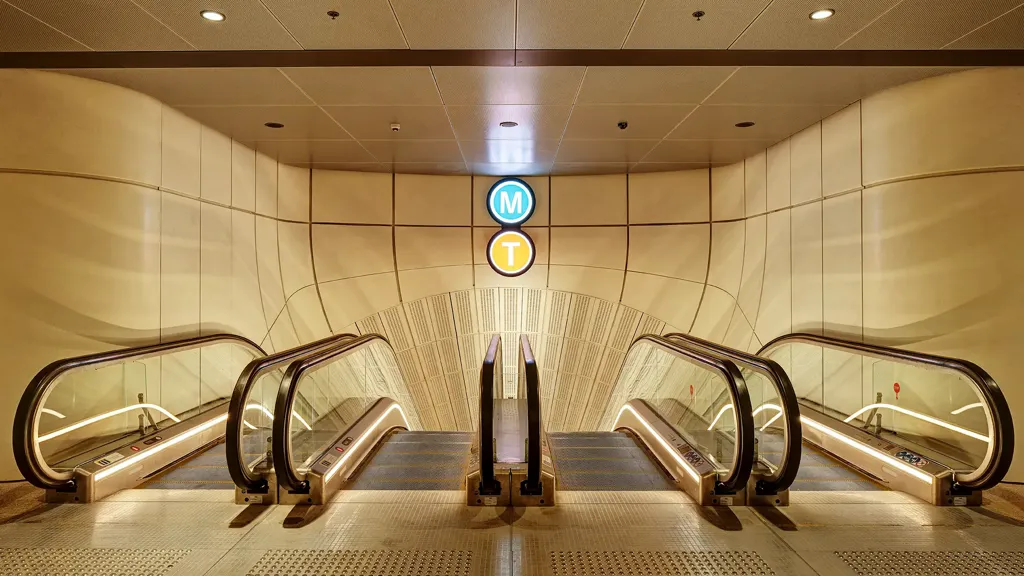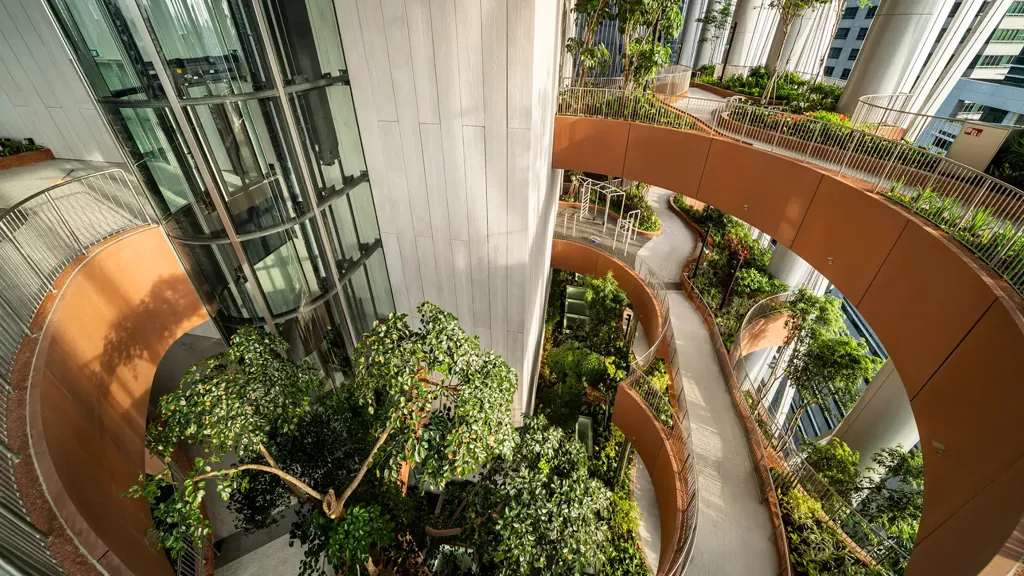Bendigo’s new timber building exemplifies environmentally sustainable design
Galkangu Bendigo GovHub

What we delivered
-
The largest locally sourced timber building in Australia.
-
A 20% reduction in embodied carbon compared to a traditionally constructed building.
-
A 6-star Green Star rating in high-performing sustainability outcomes.
Get in touch with our team
Development Victoria had a vision to create an exemplar building providing a single point of access for government services, revitalises the city centre and delivers economic benefits to the community.
They were looking for a modern workplace and public service destination which could accommodate 1,000 employees, reflect First Nations culture, and welcome the community.
We partnered with Lyons, Development Victoria, Regional Development Victoria, Dja Dja Wurrung Clans Aboriginal Corporation and stakeholders to design a building with natural timber throughout, adding warmth to the interior spaces.
Our multidisciplinary team of structural, fire, and building services engineers, sustainability consultants and acoustic specialists worked together to bring the design to life. The timber design enabled Development Victoria to reach their overall sustainability goals, including a 20 per cent reduction in embodied carbon compared to a traditionally constructed building.
Through collaboration with partners, we achieved a design solution to expose the timber soffits (the underside of the architectural features) and frames. Our expertise in fire engineering ensured the timber structure was compliant and safe.
Galkangu achieved a 6-star Green Star rating in high-performing sustainability design outcomes and is a precedent for sustainable timber design.
The hub is a valuable community asset and workplace that enhances wellbeing and minimises its environmental impact.
A timber structure
Our structural team was innovative in the building’s design by incorporating a buildable use of glue-laminated timber (glulam or GLT) post and beam structure with cross-laminated timber (CLT) floors, with exposed soffits.
To achieve the architectural vision and ensure the building assimilated with the surrounding natural environment, we designed specific curved cutouts in the floorplate and façade to save the established mature trees on the perimeter of the building and open up the large floorplates.
To maximise views out and daylight into the workplace, the structural design solution avoids the need for any façade bracing which is often adopted for mass timber buildings.
In addition to using GLT and CLT in construction, further carbon reducing initiatives were employed, including a 30 per cent replacement of Portland cement with fly ash, installing carbon neutral carpets and installing energy-efficient sunshade fins in the façade.
Overall, we achieved a 20 per cent reduction in the building’s global warming potential.

Adam Pustola
Principal, Lyons
Ensuring fire safety
The exposed CLT soffits required fire engineering expertise to ensure the fire authority had confidence in the design and performance.
The use of differing building materials in combination with complex geometry created unique challenges for our team.
To dramatically reduce the number of physical fire tests required to be undertaken, we completed advanced Finite Element Analysis (FEA) – a digital engineering tool employed to analyse how materials react in various conditions. Our fire expert team is one of only a select few in the world that could achieve this.
This highly specialist technical analysis saved valuable time and money in the design and delivery process while ensuring the timber structure was compliant and safe for the Bendigo community.
Enhancing the occupant experience
An important element of this project was the incorporation of Aboriginal design elements throughout the façade. Our team engaged in a collaborative partnership with DJAARA (Dja Dja Wurrung Clans Aboriginal Corporation) to create this artistic feature.
The team was able to avoid the need for façade bracing, an innovative outcome as bracing is often adopted in mass timber buildings. This design achievement further enhances the workplace experience by maximising views looking out from the building and increasing the daylight into the space. Importantly, the Dja Dja Wurrung artwork on the façade is fully visible and celebrated, as there’s no heavy bracing structure obstructing the art.


Building services
Our building services engineers were crucial in enabling the design of the exposed CLT soffits, which was a key architectural element. The team achieved this by implementing an Under Floor Air Displacement system and removing overhead ductwork.
Acoustic consulting
Our acoustic specialists were able to meet the required noise performance of the timber floors without using a screed (a covering laid over a subfloor), which is often implemented to manage acoustics. The benefits of this include the elimination of “wet trade”, such as concrete on site, and a faster construction period.
To enhance the workplace, we integrated the design solution for reverberation control with the fire team to achieve a consistent strategy that maximised the exposed CLT soffits.
Through early cross collaboration our whole team optimised floor to floor heights through spatial coordination of multiple engineering and client requirements.
Lyons
Projects
Explore more property projects

Technical design advice to ensure the functionality and viability of Dubai's new super slender skyscraper
Muraba Veil, United Arab Emirates

Designing Sydney’s first integrated station development
Sydney Metro Martin Place integrated station development, Australia

An iconic landmark shaping the future for office buildings
The Henderson Building, Hong Kong

CapitaSpring uses biophilic design to keep people cool and healthy
CapitaSpring, Singapore
Get in touch with us
If you'd like to speak to one of our property experts about any of the issues raised on this page or a potential collaboration then please get in touch by completing the form.

